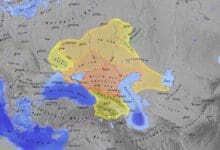One Hundred Thousand Years of Writing
There is a branch of archeology that studies the language and alphabet of our ancestors.
Alphabets
What we know is that the ancient languages or proto languages, (100,000 to 50,000 years B.C.), were made up of paintings that represented animals, people hunting or simply hands.
This symbolic language with the millennia was transformed into ideograms, which represented concepts or ideas in a synthetic way, which were accompanied by a certain sound for each image.
Even today there are cultures such as China, Japan or Nahuatl, which through ideograms represent words or complete ideas.
Some linguists argue that language today is linked to ideograms, since emoticons convey complete ideas or feelings.
Hieratic writing
More than 9,000 years ago in the lands of Egypt, the first ideograms carved in stone appeared, called “hieroglyphics”, with scenes of the interrelationship between humans and the gods.
In the following two millennia, an attempt was made to move from stone to papyrus or leather, but for this they needed to simplify these hieroglyphics by distributing these images into 22 symbols that represented “syllables”, which when combined together formed ideas or words, this was called Hieratic Writing. , which allowed scribes to quickly capture ideas on papyri.
After some millennium the syllables resulted in unique symbols, each one responding to a sound, creating what we know today as “letters”, an apparently “alphabetic” system known as Proto Canaanite Script.
The idea of combining letters to create words caused a revolution in written communications that changed the course of history, comparable only to printing or technology.
Cuneiform and Phoenician Writing
While this was happening, in Mesopotamia, more than 7,000 years ago, the Cuneiform Writing used by the Sumerians arose, symbols that in a short time shaped the Semitic languages, mainly Arabic and Hebrew.
For their part, the Phoenicians (Canaanite Semites) took the Proto Canaanite script and synthesized it, creating the Phoenician Script, giving rise to the first known phonemic script, which contained only 24 different letters, creating a simple language for merchants to learn. even the Phoenician letters being phonetic could be used to write many different languages.
The Phoenicians were great merchants who colonized almost the entire Mediterranean coast, whose commercial centers adapted their original language to Phoenician phonetics.











